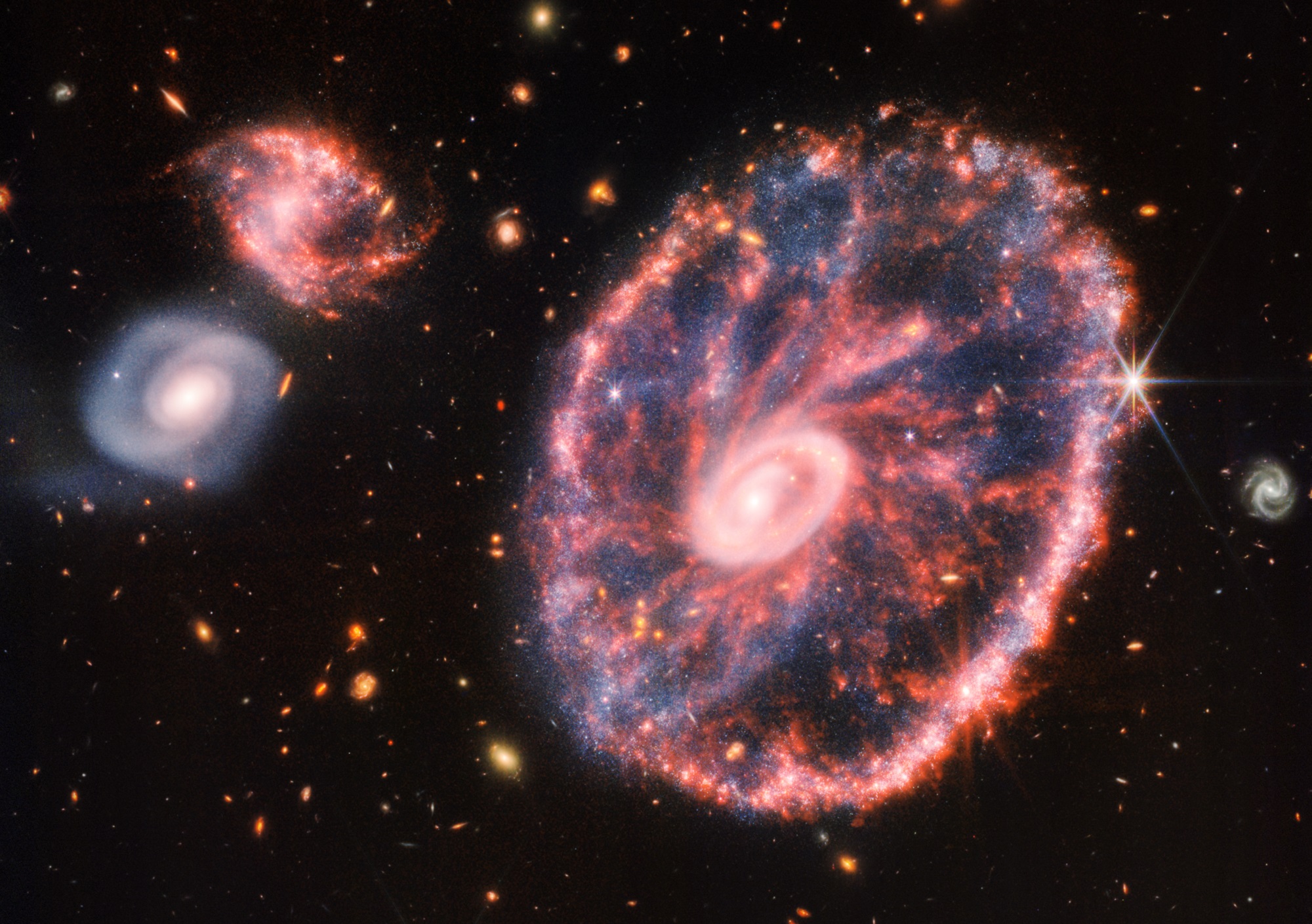

Galaxies don’t stay static: They twirl, shapeshift, and erupt into novas and kilanovas. That means every time we view a star system, whether it’s 13.5 billion light-years away like HD1 or our home galaxy of the Milky Way, we’re only capturing a little moment of its life.
The James Webb Space Telescope’s (JWST) new image of the Cartwheel Galaxy, located 500 million light-years away in the Sculptor Constellation, is the perfect example of a formation in motion. Previously documented by Hubble in 1996, its unique ring structure, which probably resulted from a high-speed collision between a large and small star cluster 200 million years back, is already showing signs of growth. Part of this is because JWST can detect stellar details otherwise obscured by cosmic dust. But the image also shows the galaxy in an epically long transition, with natal stars bursting out of its gummy edges.
[Related: What animal do you see in this nebula?]
With data from the telescope’s Near-Infrared and Mid-Infrared cameras, the JWST team created a colorized composite that exposes fresh regions of upheaval in the formation. As NASA explains on its website, the blue wisps mark pockets of star production, while eye-catching red spokes map loose chemical components like hydrocarbons. The JWST image also identifies a contrast in textures between the core and the extremities of the Cartwheel Galaxy. Viewers can look at “the smooth distribution or shape of the older star populations and dense dust in the core compared to the clumpy shapes associated with the younger star populations outside of it,” according to the NASA post.
As the galaxy keeps expanding from the collision point, its “cartwheeling” limbs should become even more noticeable. The process will take a couple more years—anywhere from hundreds of millions to billions—but we might see some evidence of change the next time JWST turns its gold-plated mirrors toward Sculptor. After all, Hubble discovered quite a glow-up when it revisited the constellation 22 years later. While many of the revelations come down to upgrades in space technology and research, at the end of the day, it’s about the stories told by galaxies that never settle.
